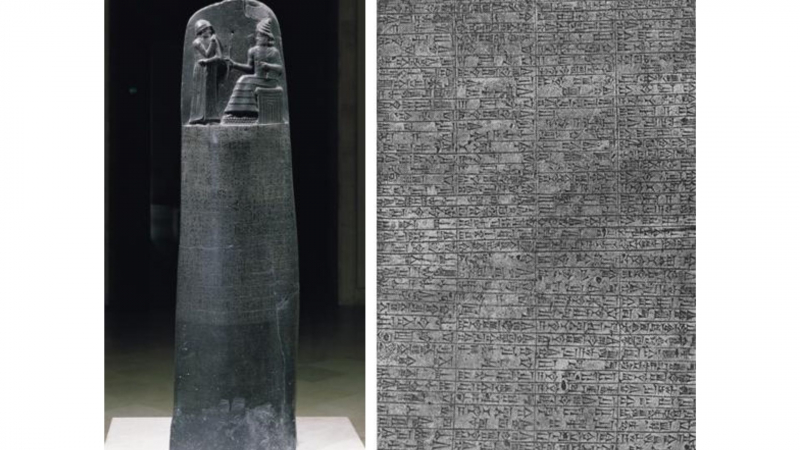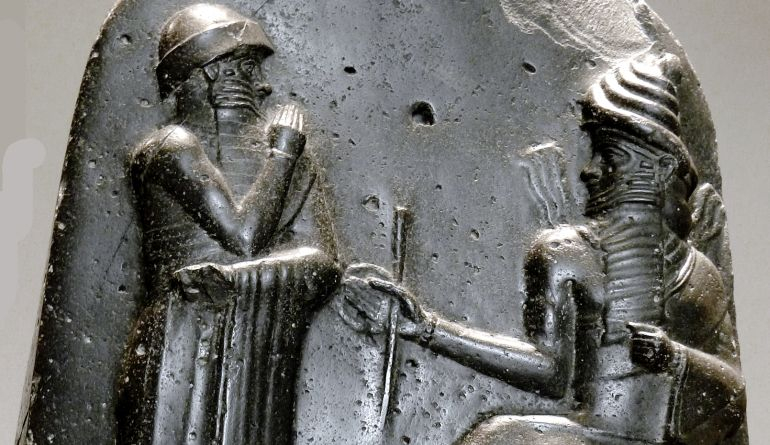Code Of Hammurabi

When talking about contributions of Hammurabi, code of Hammurabi can not be missed. While spending a lot of time developing his empire, Hammurabi also focused on the Mesopotamian constitution, establishing an unparalleled judicial system. The Code of Hammurabi, which he codified, was the most comprehensive body of laws ever created. These laws were engraved on 12 stones and put on display for everyone to see. The 282 rules in the code were written in the following format: "If... then..." These principles comprised everything from property, marriage, and family connections to technical procedures, crime, and punishment. They were divided into domestic, social, and commercial laws. At the top of the stele is a relief depiction of Hammurabi and Shamash, the sun deity and god of justice in ancient Babylonia. There are roughly 4,130 lines of cuneiform writing below the relief, of which one fifth is made up of a poetic prologue and epilogue, while the other four fifths are typically referred to as the rules. Hammurabi asserts in the prologue that the gods gave him the right to rule in order "to prevent the mighty from abusing the vulnerable."
Laws were in place to safeguard women, children, slaves, and property, and famine, flood, and drought victims were taken care of. Crime and punishment were first proposed by Hammurabi. The seriousness of the crime determined the severity of the punishments, which were not predetermined. The following are some code specifics: In some instances, the penalty was a thousand times harsher than the offense, according to gender and class, the terms and circumstances were modified, the law guaranteed workers a minimum salary and a person was given the death penalty if they gave a false testimony.
Long after Hammurabi's demise, the code was still in use.
Despite the ambiguity surrounding these concerns, outside of Assyriology, Hammurabi is acknowledged as a significant character in the history of law and the text as a genuine legal code. Along with other legislators, Hammurabi is shown in relief in the U.S. Capitol. The United Nations' headquarters in New York City and the Pergamon Museum in Berlin both have reproductions of the stele on display.






